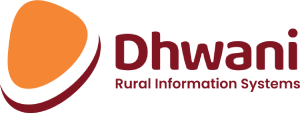Two fundamental concepts stand out in the ever-changing field of digital design and development: usability and accessibility. Despite their frequent interchangeability, they stand for different but related aspects of developing inclusive and meaningful digital experiences. We explore the depths of accessibility and usability in this investigation, recognizing their distinctions, and importance, and identifying ways to combine them for the benefit of all users.
Understanding Usability:
The foundation of user experience (UX) design is usability, which focuses on how quickly and simply users can engage with a digital good or service. The effectiveness, efficiency, and satisfaction with which users accomplish their objectives within a system are at the heart of usability. It includes features like a simple layout, helpful feedback, straightforward navigation, and efficient interactions. Users can complete activities with the least amount of difficulty when a design is useful, which increases user pleasure and engagement.
Exploring Accessibility:
Conversely, accessibility builds on the concepts of usability to guarantee that all users—including those with disabilities—can perceive, operate, and comprehend digital experiences. It includes design factors that account for a range of disabilities, including those related to vision, hearing, movement, or cognition. Regardless of a person’s talents or limits, accessibility removes barriers and gives everyone equal access to information and functions.

The Interplay Between Usability and Accessibility:
Although accessibility and usability have different functions, they both aim to improve the user experience. These two ideas work well together to create interfaces that are inclusive of a wide range of user demands and preferences while yet being simple to use. For the vast majority of users, a usable design may be simple and effective, yet it may unintentionally leave those with disabilities out. On the other hand, while an accessible design could benefit those with impairments, it might compromise the usability of the design for a larger audience.

Strategies for Harmonizing Usability and Accessibility:
- Inclusive Design Thinking: Adopt a user-centred approach that, from the beginning of the design process, takes into account the various demands and viewpoints of users. Include user scenarios and user personas that cover a broad spectrum of situations and skill levels.
- Clear Communication: Make sure the information is presented in a clear, succinct, and comprehensible way by using simple language and offering substitute formats, such as captions or transcripts for multimedia content.

3. Flexible Interaction: Create user interfaces that provide a variety of ways to complete tasks while taking into account assistive devices, various input methods, and navigation preferences.
4. Consistent Design Patterns: All users will benefit from predictability and a reduction in cognitive burden when design patterns and conventions are established and followed consistently
5. Continuous Evaluation and Improvement: Test designs frequently on a variety of user groups, including people with disabilities, and make adjustments based on feedback to improve accessibility and usability.
Conclusion:
Usability and accessibility are guiding concepts that form the core of the user experience in the digital sphere, not just boxes to be checked off. We take the first steps toward diversity, empathy, and empowerment when we embrace both usability and accessibility in our design activities. In order to guarantee that no user is left behind in the pursuit of flawless interaction and deep connection, let us work to create digital environments that not only delight and engage but also embrace the rich tapestry of human variation.




